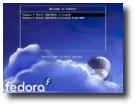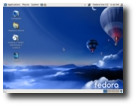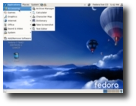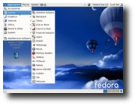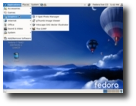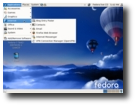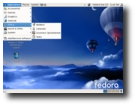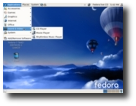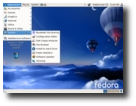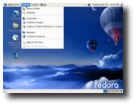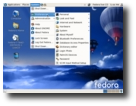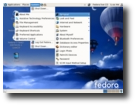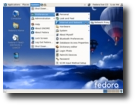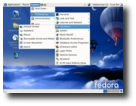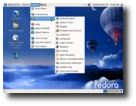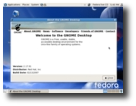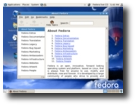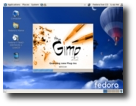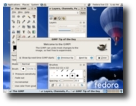Fedora 7 Test 2 has started appearing today on the mirrors worldwide, just as I am writing this. The Fedora team has made some important changes in the F7 schedule, like the inclusion of a new Test build, for the first time in the history of Fedora and of course, this will slip the final release date until the end of May 2007 and most probably, we will have Fedora 7 on our desktops by July this year.
"I am pleased to announce the second test release for Fedora 7. This test release includes significant new versions of many key components and technologies." -says Jesse Keating, the Fedora Release Engineer.
Highlights of this release include:
■ Kernel 2.6.21 RC1; ■ An i386 ISO for a Desktop Live CD with the ability to install onto a hard disk using the same graphical Anaconda installer as the non-live CD variant; ■ The GNOME 2.17.91 desktop environment; ■ A brand new Echo icon theme; ■ The Fedora Core and Extras software repositories are being merged, resulting in a shared infrastructure and a single repository of packages to which everyone is invited to contribute; ■ System administration tools may be modified under the testing process;
Most things should work in this release, but because it's still a test release, it is not intended to be installed for regular use and the Fedora team needs your help to find what is broken.
Known Issues:
Problems with mkinitrd
This test release has an rpm ordering issue that seems to affect some people with regard to mkinitrd being installed correctly. If your install seems to stall at installing the kernel and never continues, please try the updates image. For more information on how to use the updates image, please click here.
Upgrading with PATA Hard Disks
If you are using PATA (parallel ATA or IDE) hard disks and you attempt to do a manual yum upgrade to this release, you may be unable to boot your system when finished. To avoid this problem, use the Anaconda installer to upgrade your system instead of using yum.
Fedora 7 is promising new features like:
■ Rock solid wireless networking support; ■ Wireless firmware; ■ Pungi will be used for tree building; ■ Fast user switching; ■ RandR 1.2; ■ KVM virtualization support; ■ Boot and shutdown speed-up; ■ New init system; ■ rpm and yum enhancements; ■ libata will be used for PATA support; ■ syslog to be replaced with syslog-ng; ■ Improved firewire support; ■ Real-time kernel; ■ Tickless kernel support; ■ Fix wakeups across the distribution; ■ Encrypted file systems.
The New Fedora 7 Schedule:
■ 1 March 2007 - F7 Test2 release ■ 19 March 2007 - F7 FEATURE freeze / F7 string freeze / F7 Test3 development freeze ■ 27 March 2007 - F7 Test3 Release ■ 16 April 2007 - F7 translation freeze / F7 Test4 development freeze ■ 24 April 2007 - F7 Test4 Release / Continual freeze. Only critical bugs fixed ■ 3 May 2007 - Final devel freeze ■ 24 May 2007 - F7 General Availability
Please enjoy our screenshot tour for this release of Fedora 7:
About Fedora:
The Fedora Project is a Red-Hat-sponsored and community-supported open source project. It is also a proving ground for a new technology that may eventually make its way into Red Hat products. It is not a supported product of Red Hat, Inc.
The goal of The Fedora Project is to work with the Linux community in order to build a complete, general purpose operating system exclusively from free software. Development will be done in a public forum. The project will produce time-based releases of Fedora Core about 2-3 times a year with a public release schedule.
You can download Fedora 7 Test 2 now from Softpedia.
You can download Fedora Core 6 now from Softpedia.

 14 DAY TRIAL //
14 DAY TRIAL // 